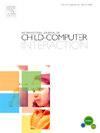促进多层次化学理解的增强现实互动体验
Q1 Social Sciences
International Journal of Child-Computer Interaction
Pub Date : 2024-09-17
DOI:10.1016/j.ijcci.2024.100681
引用次数: 0
摘要
儿童早期认为化学是一门复杂而艰涩的学科,这会影响他们的成绩和未来的职业选择。增强现实技术(AR)和游戏可以成功地让学生参与到被认为不那么有趣或具有挑战性的学习内容中。然而,在化学领域,绝大多数 AR 教育工具都是为高年级学生设计的,主要侧重于科学现象的可视化,因此无法吸引年轻群体。在本文中,我们提出设计和实施三种基于 AR 游戏的学习体验,从宏观、微观和符号三个层面提供化学内容。我们以 66 名儿童(11-13 岁)为对象对我们的体验进行了评估,并取得了显著的成果:更高的学习效率、积极情绪的增加和消极情绪的减少。这些结果鼓励我们继续评估这项技术,将其作为激发和鼓励儿童对化学的兴趣的工具。本文章由计算机程序翻译,如有差异,请以英文原文为准。
Augmented reality interactive experiences for multi-level chemistry understanding
Children's early perception of chemistry as a complex and daunting subject can affect their achievements and future career choices. Augmented Reality (AR) and games can successfully engage students with learning content perceived to be less interesting or challenging. However, in chemistry, the vast majority of AR educational tools are designed for older students and are mainly focused on the visualisation of scientific phenomena, thus failing to engage a younger population. In this paper, we propose designing and implementing three AR game-based learning experiences that provide chemistry content at three levels: macroscopic, microscopic, and symbolic. We evaluated our experiences with 66 children (11–13 years old) with significant results: higher learning gains, an increase in the positive affect and a decrease in the negative affect. The results encouraged us to keep evaluating this technology as a tool to motivate and encourage children's interest in chemistry.
求助全文
通过发布文献求助,成功后即可免费获取论文全文。
去求助
来源期刊

International Journal of Child-Computer Interaction
Social Sciences-Education
CiteScore
7.20
自引率
0.00%
发文量
73
 求助内容:
求助内容: 应助结果提醒方式:
应助结果提醒方式:


